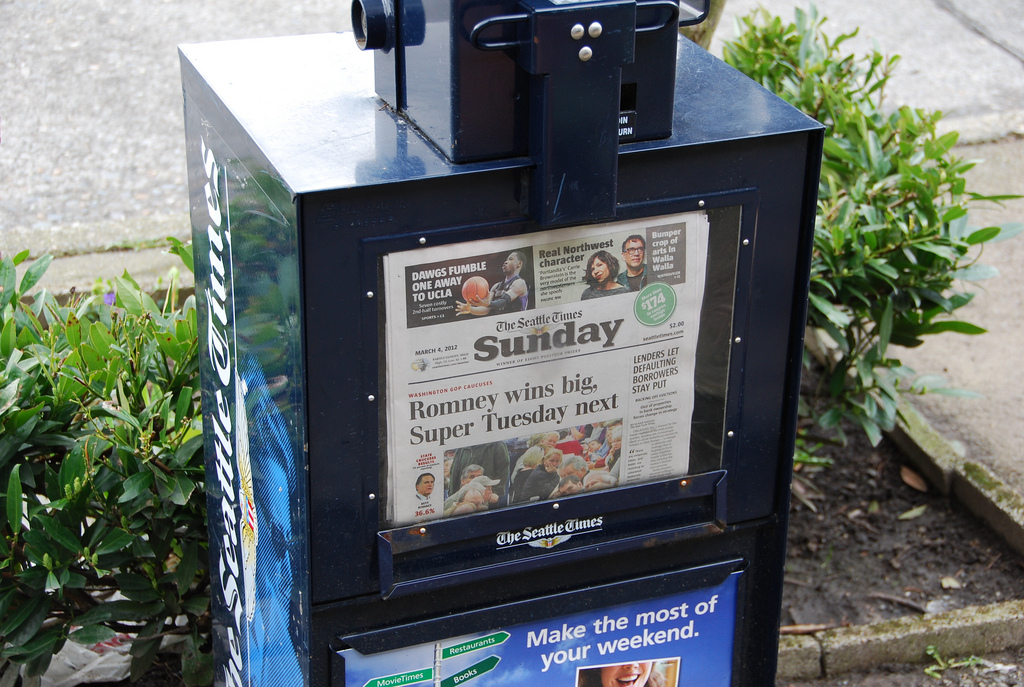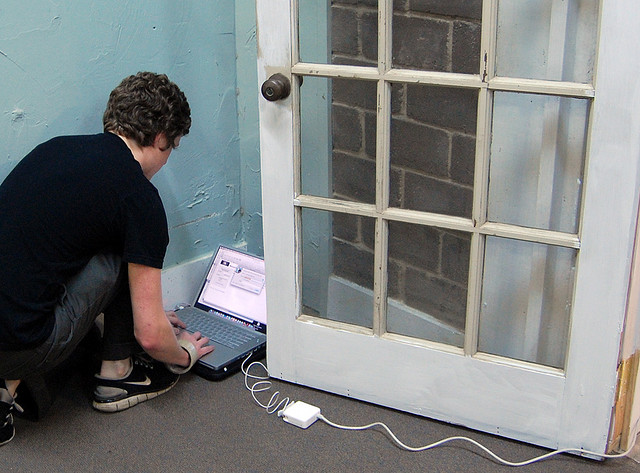Neue Zürcher Zeitung, April 17, 2009
Do corrections columns strengthen the news media’s credibility?
A frequent victim of journalistic error, Barack Obama may have set records in name-botching. On his blog RegretTheError.com, media journalist Craig Silverman publishes an annual balance report tallying journalistic blunders. He explains, “The more media attention a person attracts, the more frequently the person is also a victim of media mistakes – that’s the rule.” Silverman reveals – with great pleasure – just how many reporters have run into trouble with Barack Obama’s name over the past year. For example, both CNN and the New York Post are guilty of calling him “Osama.”
A foundation of reliability
Silverman, who recently authored a book on the subject, will likely continue to find work in the business of error-reporting, as journalism cultures of old and new worlds differ fundamentally on a crucial point. In America, most journalists agree that errors require correction and that it helps the credibility of editorial departments if they are corrected voluntarily. “Accuracy is the foundation upon which everything else is built: context, interpretations, debates, the entire public communication. If the foundation does not hold up, everything else is damaged,” write Bill Kovach and Tom Rosenstiel, whose Committee Of Concerned Journalists rose to the top of the movement calling for quality in journalism.
In 1936, Mitchell Charnley, the executive editor at a local newspaper and a journalism lecturer at the University of Minnesota, submitted the first systematic study of reporting inaccuracies. He gathered a total of 1000 articles from three local newspapers and sent them to the contributors mentioned as sources in the articles. With their help, he found that almost half of the examined articles (46 percent) contained errors. Charnley’s study has been repeated several times and his procedure still shapes today’s relevant research – and the follow-ups demonstrate that news errors persist at perhaps a record rate. In the largest study to date, Scott R. Maier of the University of Oregon examined 4800 articles from 14 different newspapers, determining that 61 percent of the reports and features provided in these newspapers contained at least one error. Recently, Maier resided in Ticino, a canton of Switzerland, where his study is replicated for Switzerland and Italy at the University of Lugano.
Errors in 61 percent of reports
Nearly all American newspapers rectify reporting errors in “correction corners,” designated sections in the paper. While American papers volunteer corrections, the European media prefers to cover-up inaccuracies. A few years ago, the majority (58 percent) of American journalists still believed, however, that a correction would “always” follow a discovered reporting error. Readers were, by far, more realistic. Only 20 percent believed errors would be reported.
If one considers the error rate determined by Maier a benchmark, it would require “a whole correction page” says Maier, if every inaccuracy were corrected. Maier took a closer look at 10 large regional U.S. newspapers and found that – contrary to the beliefs of most journalists – more than 98 percent of all errors were not corrected (see Neue Zürcher Zeitung of 3.3.2006). Does Maier thereby give grist to the mills of editorial departments in Europe that don’t even attempt corrections? No, because other research clearly confirms that American readers, by an impressive two-thirds majority (63 percent), appreciate correction columns.
The challenge is to correct flaws in reporting more reliably, especially if they have the potential to misinform. A first step would be to admit that research regarding error frequency can be useful. In order to implement corrections everywhere instead of arbitrarily, an open discussion climate in the editorial department is required. Even if this succeeds, problems remain: “There are no honors for precise reporting,” says Maier. Because accuracy is expected as a matter of course, incentives for the individual are missing and experienced journalists count on the fact that most sources, due to apathy, fear, or costs, do not call for counterstatements to straighten out errors. Typically, sanctions for non-correction do not exist.
A thorough Chicago Tribune
The most exhaustive error-reduction project to date was started in the late Nineties by the Chicago Tribune. Without bureaucratic meticulousness and bookkeeping the initiative couldn’t have been realized. Each error was systematically recorded. Attempts were then made to determine how the error occurred, who committed it, who discovered it, and whether it could have been avoided. Finally, an “Error Policy Manual” was created as a proper guide for prevention. As one can imagine, this approach wasn’t met with great bursts of enthusiasm from the editorial department. The recording of errors was an aggravating task, and reporters and editors feared punishment for sins of omission. These fears eventually dissipated as the editor-in-chief successfully extinguished concern. Relevant training programs were not only limited to those who faltered. All reporters, from interns to Pulitzer winners, were invited to attend workshops. Howard Tyner, editor-in-chief at that time, was able to cut the number of discovered mistakes almost in half within five years. Statistically they were reduced from 4.5 to 2.5 errors per page.
How great are the chances that other editorial departments will unfold comparable initiatives? Scott Maier is not particularly optimistic. For the individual journalist, it is better to cover-up errors rather than to voluntarily exposing oneself in a correction column to one’s colleagues. Even if the author’s name or his initials are not used in the correction, everyone in the newsroom will know who made the mistake. Thus, the individual journalist harms his reputation if he corrects conscientiously while his colleagues take a more relaxed view. Maier explains why the task of leading editors to implement correction policies is kept within bounds, even in the U.S.
“We achieved the achievable.”
Jack Shafer, of the online magazine Slate, rightfully views error prevention and correction as an economic problem, a question of expenditure and profit. He says, “In the cost-benefit analysis of error prevention, the newspapers have probably reached what can be achieved.” However, Scott Maier, who worked in a newsroom for many years before he became a researcher, contradicts his claim. According to Maier, reporters and editors should always ask themselves the following two questions in order to obtain more precision and reliability: “How do I know this?” in order to identify hard factual errors, and, “How would the people in the story feel when reading it?” in order to avoid softer, subjective errors.
Maier concedes that correction columns alone won’t solve journalism’s credibility problem. “More important than getting all facts straight is how a story unfolds,” he says. “Its tone, sources, relevance, perspective – that’s what really counts.”
Why newsrooms in Switzerland and Germany are so hesitant to acknowledge errors is something Maier can’t quite understand. From his American perspective, the correction of errors is imperative for four essential reasons. First, a reliable newspaper must eliminate errors and misunderstandings. Unchecked errors are likely to be repeated, now at an accelerated rate thanks to advances in Internet technology. Additionally, a journalist’s personal credibility increases if errors are revealed. And finally, in today’s world of informal communication, precision is a criterion by which professional journalists can set themselves apart from bloggers and amateur journalists.
The tireless Craig Silverman recommends developing error correction as an “art.” He considers Ian Mayes a role model. During his mandate, Mayes – the long-time ombudsman of the British Guardian – received 90,000 complaints from readers and has written 14,000 corrections for his newspaper. He turned corrections into “marvels,” by always making clear, with few words and a bit of dry British humor, how seriously he deals with damaging errors. For example, he writes, ” We spelt Morecambe, the town in Lancashire, wrong again on page 2, yesterday. We often do.” And then half a year later, “The absence of corrections yesterday was due to a technical hitch – rather than any sudden onset of accuracy.”
* Silverman, Craig (2007): Regret the Error, New York: Sterling Publishing
Translation by Karin Ebderhardt
Tags: corrections, errors, Jack Shafer, Scott Maier, slate














































